我们在之前的文章中提到过《大数据可视化从未如此简单 - Apache Zepplien全面介绍》一文中介绍了 Zeppelin 的主要功能和特点,并且最后还用一个案例介绍了这个框架的使用。这节课我们用两个直观的小案例来介绍 Zepplin 和 Spark 如何配合使用。
到目前为止,Apache Spark 已经支持三种集群管理器类型(Standalone,Apache Mesos 和 Hadoop YARN )。本文中我们根据官网文档使用 Docker 脚本构建一个 Spark standalone mode ( Spark 独立模式 )的环境来使用。
Spark 独立模式环境搭建
Spark standalone 是 Spark 附带的简单集群管理器,可以轻松设置集群。您可以通过以下步骤简单地设置 Spark 独立环境。
注意
由于 Apache Zeppelin 和 Spark 为其 Web UI 使用相同的 8080 端口,因此您可能需要在 conf / zeppelin-site.xml 中更改 zeppelin.server.port 。
1. 构建 Docker 文件
您可以在脚本 / docker / spark-cluster-managers 下找到 docker 脚本文件。
cd $ZEPPELIN_HOME/scripts/docker/spark-cluster-managers/spark_standalonedocker build -t "spark_standalone" .
复制代码
2. 启动 Docker
docker run -it \-p 8080:8080 \-p 7077:7077 \-p 8888:8888 \-p 8081:8081 \-h sparkmaster \--name spark_standalone \spark_standalone bash;
复制代码
在这里运行 docker 容器的 sparkmaster 主机名应该在 /etc/hosts 中绑定映射关系。
3. 在 Zeppelin 中配置 Spark 解释器
将 Spark master 设置为 spark://< hostname >:7077 在 Zeppelin 的解释器设置页面上。
4. 用 Spark 解释器运行 Zeppelin
在 Zeppelin 中运行带有 Spark 解释器的单个段落后,浏览 https://< hostname>:8080,并检查 Spark 集群是否运行正常。
然后我们可以用以下命令简单地验证 Spark 在 Docker 中是否运行良好。
Spark on Zepplin 读取本地文件
假设我们本地有一个名为 bank.csv 的文件,样例数据如下:
age:Integer, job:String, marital : String, education : String, balance : Integer20;teacher;single;本科;2000025;plumber;single;本科;1000021;doctor;single;本科;2500023;singer;single;本科;20000...
复制代码
首先,将 csv 格式的数据转换成 RDD Bank 对象,运行以下脚本。这也将使用 filter 功能过滤掉一些数据。
val bankText = sc.textFile("yourPath/bank/bank-full.csv")case class Bank(age:Integer, job:String, marital : String, education : String, balance : Integer)
// split each line, filter out header (starts with "age"), and map it into Bank case classval bank = bankText.map(s=>s.split(";")).filter(s=>s(0)!="\"age\"").map( s=>Bank(s(0).toInt, s(1).replaceAll("\"", ""), s(2).replaceAll("\"", ""), s(3).replaceAll("\"", ""), s(5).replaceAll("\"", "").toInt ))// convert to DataFrame and create temporal tablebank.toDF().registerTempTable("bank")
复制代码
如果想使用图形化看到年龄分布,可以运行如下 sql:
%sql
select age, count(1) from bank where age < 30 group by age order by age
您可以输入框通过更换设置年龄条件 30 用 ${maxAge=30}。
%sql
select age, count(1) from bank where age < ${maxAge=30} group by age order by age
如果希望看到有一定婚姻状况的年龄分布,并添加组合框来选择婚姻状况:
%sql
select age, count(1) from bank where marital="${marital=single,single|divorced|married}" group by age order by age
Zeppelin 支持画图,功能简单但强大,可同时输出表格、柱状图、折线图、饼状图、折线图、点图。
下面将各年龄的用户数用画出来,画图的实现可以将结果组织成下面这种格式:
println(“%table column_1\tcolumn_2\n”+value_1\tvalue_2\n+…)
复制代码
最后,我们甚至可以直接将运算结果存入 Mysql 中:
%sparkdf3.write.mode("overwrite").format("jdbc").option("driver","com.mysql.jdbc.Driver").option("user","root").option("password","password").option("url","jdbc:mysql://localhost:3306/spark_demo").option("dbtable","record").save()
复制代码
Spark on Zepplin 读取 HDFS 文件
首先我们需要配置 HDFS 文件系统解释器,我们需要进行如下的配置。在笔记本中,要启用 HDFS 解释器,可以单击齿轮图标并选择 HDFS。
然后我们就可以愉快的使用 Zepplin 读取 HDFS 文件了:
例如:下面先读取 HDFS 文件,该文件为 JSON 文件,读取出来之后取出第一列然后以 Parquet 的格式保存到 HDFS 上:
Spark on Zepplin 读取流数据
我们可以参考官网中,读取 Twitter 实时流的案例:
import org.apache.spark.streaming._import org.apache.spark.streaming.twitter._import org.apache.spark.storage.StorageLevelimport scala.io.Sourceimport scala.collection.mutable.HashMapimport java.io.Fileimport org.apache.log4j.Loggerimport org.apache.log4j.Levelimport sys.process.stringSeqToProcess
/** Configures the Oauth Credentials for accessing Twitter */def configureTwitterCredentials(apiKey: String, apiSecret: String, accessToken: String, accessTokenSecret: String) { val configs = new HashMap[String, String] ++= Seq( "apiKey" -> apiKey, "apiSecret" -> apiSecret, "accessToken" -> accessToken, "accessTokenSecret" -> accessTokenSecret) println("Configuring Twitter OAuth") configs.foreach{ case(key, value) => if (value.trim.isEmpty) { throw new Exception("Error setting authentication - value for " + key + " not set") } val fullKey = "twitter4j.oauth." + key.replace("api", "consumer") System.setProperty(fullKey, value.trim) println("\tProperty " + fullKey + " set as [" + value.trim + "]") } println()}
// Configure Twitter credentialsval apiKey = "xxxxxxxxxxxxxxxxxxxxxxxxx"val apiSecret = "xxxxxxxxxxxxxxxxxxxxxxxxxxxxxxxxxxxxxxxxxxxxxxxxxx"val accessToken = "xxxxxxxxxxxxxxxxxxxxxxxxxxxxxxxxxxxxxxxxxxxxxxxxxx"val accessTokenSecret = "xxxxxxxxxxxxxxxxxxxxxxxxxxxxxxxxxxxxxxxxxxxxx"configureTwitterCredentials(apiKey, apiSecret, accessToken, accessTokenSecret)
import org.apache.spark.streaming.twitter._val ssc = new StreamingContext(sc, Seconds(2))val tweets = TwitterUtils.createStream(ssc, None)val twt = tweets.window(Seconds(60))
case class Tweet(createdAt:Long, text:String)twt.map(status=> Tweet(status.getCreatedAt().getTime()/1000, status.getText())).foreachRDD(rdd=> // Below line works only in spark 1.3.0. // For spark 1.1.x and spark 1.2.x, // use rdd.registerTempTable("tweets") instead. rdd.toDF().registerAsTable("tweets"))
twt.print
ssc.start()
复制代码
同理,Zepplin 也可以读取 Kafka 中的数据,注册成表然后进行各种运算。我们参考一个 Zepplin 版本的 WordCount 实现:
%sparkimport _root_.kafka.serializer.DefaultDecoderimport _root_.kafka.serializer.StringDecoderimport org.apache.spark.streaming.kafka.KafkaUtilsimport org.apache.spark.storage.StorageLevelimport org.apache.spark.streaming._ // prevent INFO logging from pollution outputsc.setLogLevel("INFO") // creating the StreamingContext with 5 seconds intervalval ssc = new StreamingContext(sc, Seconds(5)) val kafkaConf = Map( "metadata.broker.list" -> "localhost:9092", "zookeeper.connect" -> "localhost:2181", "group.id" -> "kafka-streaming-example", "zookeeper.connection.timeout.ms" -> "1000") val lines = KafkaUtils.createStream[Array[Byte], String, DefaultDecoder, StringDecoder]( ssc, kafkaConf, Map("test" -> 1), // subscripe to topic and partition 1 StorageLevel.MEMORY_ONLY) val words = lines.flatMap{ case(x, y) => y.split(" ")}
import spark.implicits._
val w=words.map(x=> (x,1L)).reduceByKey(_+_)w.foreachRDD(rdd => rdd.toDF.registerTempTable("counts"))ssc.start()
复制代码
从上面的 temporary table counts 中查询每小批量的数据中 top 10 的单词值。
select * from counts order by _2 desc limit 10
复制代码
怎么样?是不是很强大?推荐大家可以自己试试看。
原文链接:英雄惜英雄-当Spark遇上Zeppelin之实战案例
欢迎关注,《大数据成神之路》系列文章

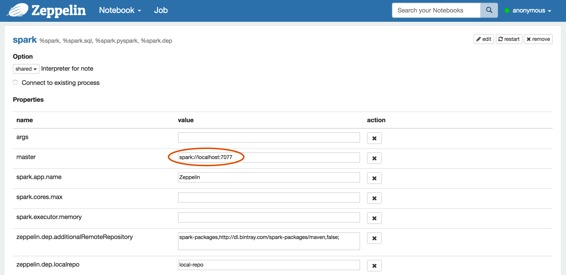
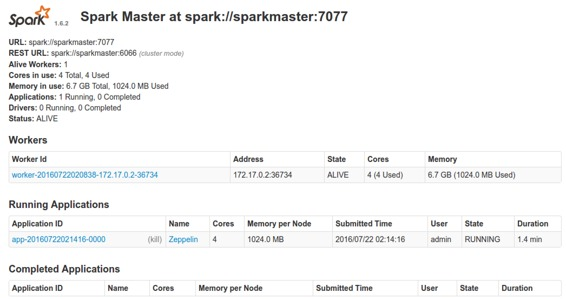

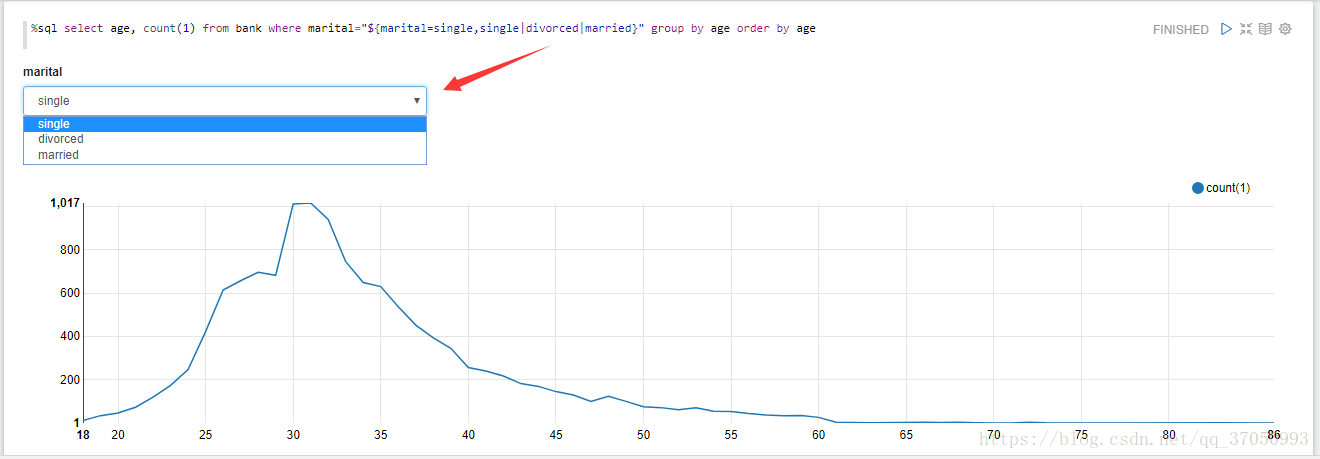


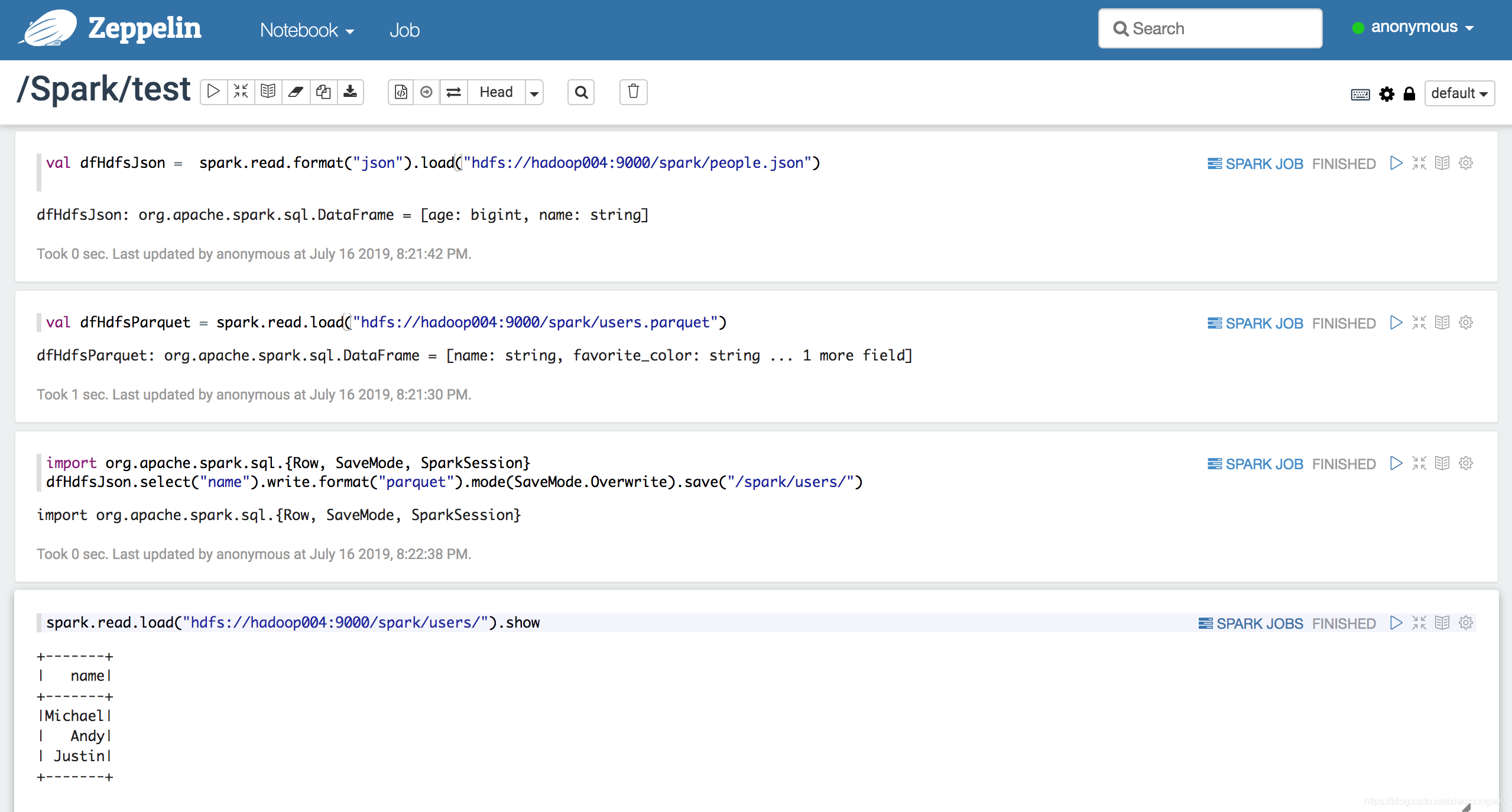
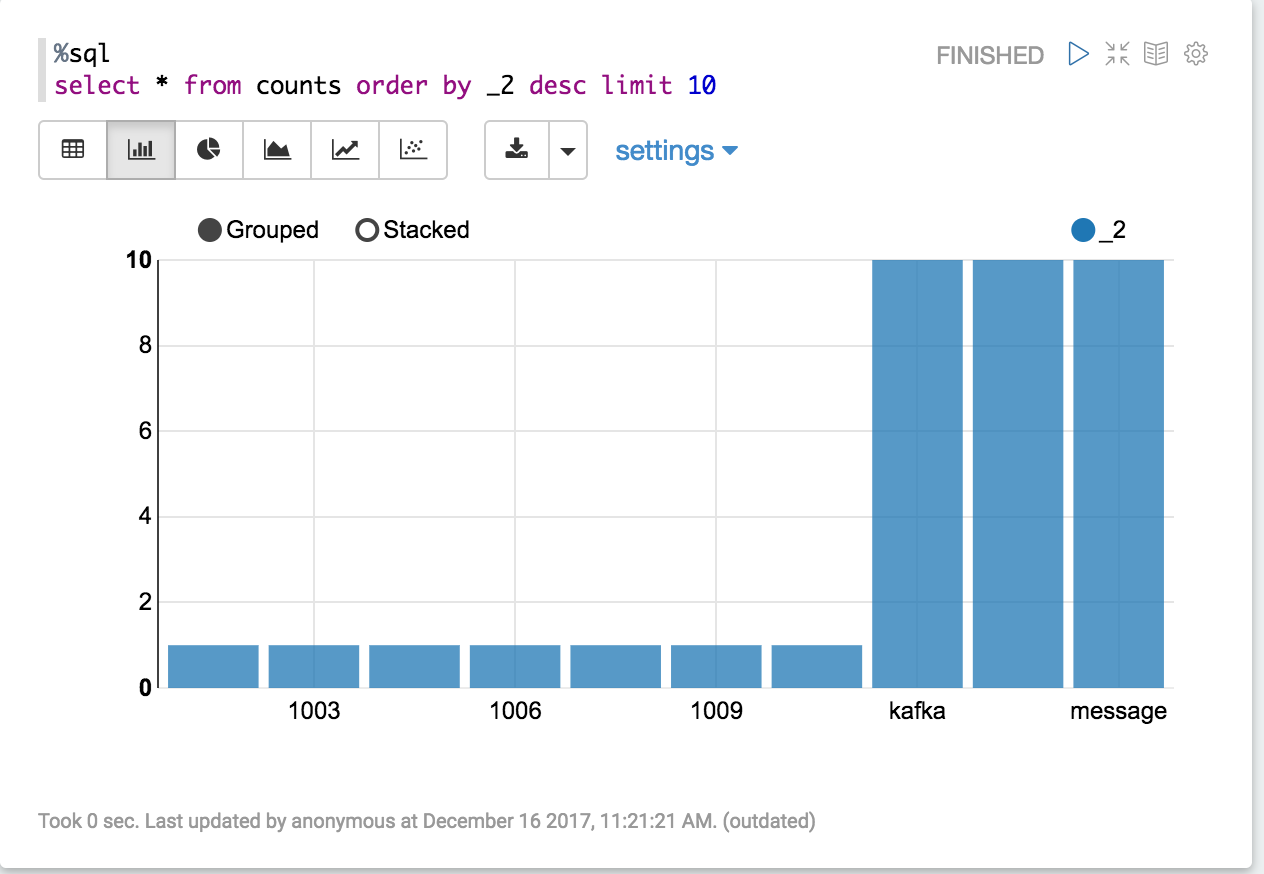












评论